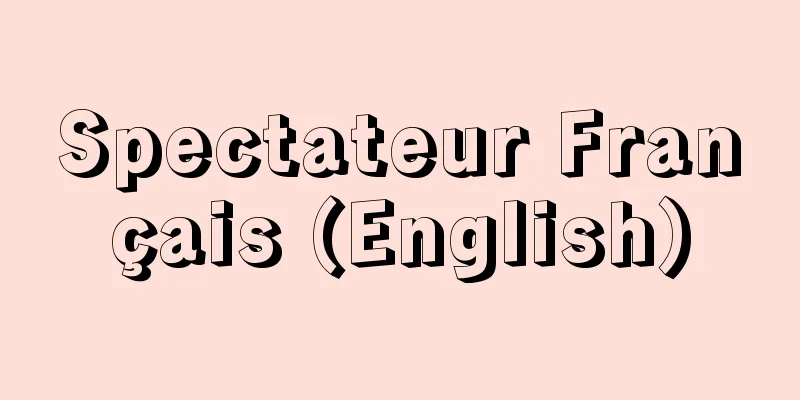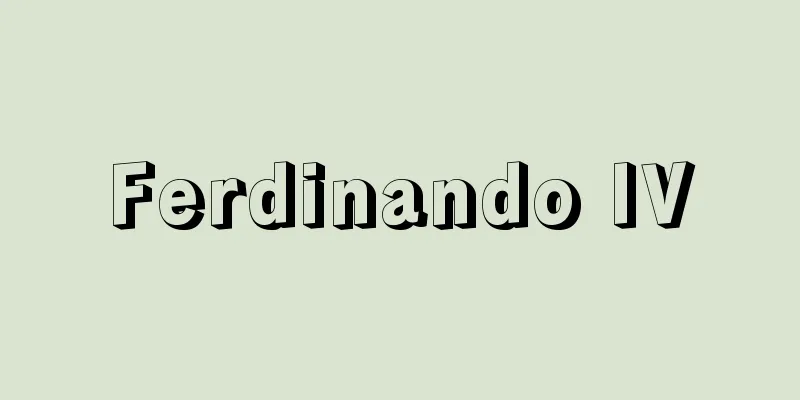Cantata - Cantata (English spelling) Italian

|
A musical term derived from the Latin and Italian cantare, meaning "to sing," and a type of vocal music. It originated as a counter term to the instrumental music "sonata." In Italy in the 17th and early 18th centuries, it was the most important secular vocal music alongside opera, but in 18th-century Germany it became the main type of Protestant church music, and since the 19th century it has been used as a general term for large-scale pieces for soloists, choruses, and instrumentals. Compared to the religious oratorio, it is originally secular and smaller in scale. [Ryuichi Higuchi] ItalyInitially, it meant a multi-part solo song with basso continuo. The name itself first appeared in Alessandro Grandi's Cantatas and Arias (1620), and Benedetto Ferrari's Varieties of Music (1633-41) perfected the basso ostinato technique characteristic of the early cantata and introduced the distinction between recitative and aria. This also determined the characteristic of the text's content, the alternation between explanation and reflection. After the heyday of Luigi Rossi and Calissimi, Cavalli and Stradella decorated the second half of the 17th century, and the Bolognese school established the cantata with instrumental accompaniment. In the Neapolitan school, represented by Alessandro Scarlatti, it was already close to opera. The heyday of the French cantata, which was initiated by Calissimi's student M. A. Charpentier, was very short, from 1715 to 1725, and the works of Clerambault and Rameau were important. [Ryuichi Higuchi] GermanyThe first cantata in Germany was Kaspar Kittel's Arias and Cantatas (1638), but Heinrich Schütz's Sinfonies sacrées (1629) can also be considered a kind of cantata. Protestant church music in the second half of the 17th century developed uniquely by introducing the Italian concerto style in the church concertos of Franz Tunder and Buxtehude, but it was E. Neumeister's collection of lyrics, Cantatas Sacres in lieu of Church Music (1704), which incorporated operatic elements of recitatives and arias, that finally gave the Italian cantata a place in society. J.S. Bach's achievement was to fuse the traditional chorale motet and the Italian cantata into a concerto style and to elevate it to artistic perfection. In addition, with the rise of opera in the 18th century at German courts, many Italian-style secular cantatas (by J.S. Bach and Telemann) were also performed. [Ryuichi Higuchi] 19th century and laterThese include Beethoven's "Calm Sea and Pleasant Voyage" (1815), Weber, Schumann, and Brahms' "Der Fate-lied" (1871). In the 20th century, it was once again in the spotlight as a means of expression for the Resistance and Socialist Realism, as seen in Poulenc's "The Human Form" (1943), Prokofiev's "They Are Seven" (1924), and Shostakovich's "In the Fatherland, Our Sun Shines" (1952). [Ryuichi Higuchi] "History of Italian Music" by Bridgeman, translated by Shinji Tanamura (Hakusuisha, Que sais-je Bunko) Source: Shogakukan Encyclopedia Nipponica About Encyclopedia Nipponica Information | Legend |
|
「歌う」を意味するラテン語およびイタリア語のカンターレcantareから派生した音楽用語で、声楽曲の一楽種。器楽曲の名称「ソナタ」に対する語として生まれた。17世紀、18世紀前半のイタリアでは、オペラと並んでもっとも重要な世俗声楽曲であったが、18世紀ドイツではプロテスタント教会音楽の主要楽種となり、19世紀以降は、独唱、合唱、器楽のための大規模な楽曲の総称として用いられた。宗教的なオラトリオに対し、本来世俗的であり、規模もより小さい。 [樋口隆一] イタリア初めは通奏低音を伴った多部分からなる独唱歌曲を意味した。名称そのものは、アレッサンドロ・グランディの『カンタータとアリア』(1620)に初めて登場し、ベネデット・フェラリの『さまざまな音楽』(1633~41)は、初期カンタータの特徴であるバッソ・オスティナート(固執低音)技法を完成して、レチタティーボとアリアの区別を導入した。これは説明と考察の交代という歌詞内容上の特色をも規定するものであった。ルイジ・ロッシやカリッシミによる全盛期を経て、カバルリ、ストラデッラは17世紀後半を飾り、ボローニャ楽派によって器楽伴奏付きのカンタータが確立された。アレッサンドロ・スカルラッティに代表されるナポリ楽派では、すでにオペラに近いものとなった。 カリッシミの弟子M・A・シャルパンチエによって始められたフランスのカンタータの全盛期は、1715~25年とごく短く、クレランボー、ラモーの作品が重要である。 [樋口隆一] ドイツドイツ最初のカンタータは、カスパー・キッテルの『アリアとカンタータ』(1638)であるが、ハインリヒ・シュッツの『シンフォニエ・サクレ』(1629)も一種のカンタータとみなしえよう。17世紀後半のプロテスタント教会音楽は、フランツ・トゥンダーやブクステフーデの教会コンチェルトとして、イタリア的協奏様式を導入した独自の発展を遂げたが、さらに、レチタティーボとアリアによるオペラ的要素を取り入れたE・ノイマイスターの歌詞集『教会音楽に代わる宗教カンタータ』(1704)が、ついにイタリア風カンタータに市民権を与える突破口となった。J・S・バッハの業績は、伝統的なコラール・モテットとイタリア的カンタータを、協奏的語法のうちに融合し、芸術的完成へと高めたことにほかならない。また18世紀ドイツの宮廷では、オペラの流行に伴い、イタリア風の世俗カンタータ(J・S・バッハ、テレマン)も数多く上演された。 [樋口隆一] 19世紀以降ベートーベンの『静かな海と楽しい航海』(1815)をはじめ、ウェーバーやシューマン、さらにブラームスの『運命の歌』(1871)がある。20世紀になると、プーランクの『人の姿』(1943)や、プロコフィエフの『彼らは七人』(1924)、ショスタコビチの『祖国にわれらの太陽は輝く』(1952)のように、レジスタンスや社会主義リアリズムの表現手段としてふたたび脚光を浴びた。 [樋口隆一] 『ブリッジマン著、店村新次訳『イタリア音楽史』(白水社・文庫クセジュ)』 出典 小学館 日本大百科全書(ニッポニカ)日本大百科全書(ニッポニカ)について 情報 | 凡例 |
>>: Ganda tribe - Ganda (English spelling)
Recommend
Character art - Mojie
A pictorial representation using characters. The ...
Employment Act of 1946
American law enacted in 1946 as a result of growin...
Salt pillow
...Salt domes in the Gulf of Mexico are particula...
Laporte
...A perennial plant of the Urticaceae family tha...
Ivory nut (English spelling)
…A tall palm tree native to Micronesia, usually g...
RCU - RCU
Respiratory care unit : An intensive care unit for...
Semper - Gottfried Semper
German architect and architectural theorist. Born...
Sounosuke Sato - Sounosuke Sato
Poet. Born in Kanagawa Prefecture. Studied at the...
Aurea Nana - Aurea Nana
...The horticultural variety Betzickiana cv. is o...
Sky pulling machine - Sky pulling machine
When it is desired to express a pattern on a wove...
Kishizawa Shikisa
Head of the Kishizawa school of Tokiwazu shamisen....
Kilonomy - Kilonomy
…Originating from grammatical accent marks, they ...
"Epigraphy" - Kinseki Mojiki
…The study of stone carvings in the Song Dynasty ...
Obara [Hot Spring] - Obara
A hot spring in Shiroishi City, southern Miyagi Pr...
Kusamao - Kusamao
→ Ramie Source: Shogakukan Encyclopedia Nipponica...









